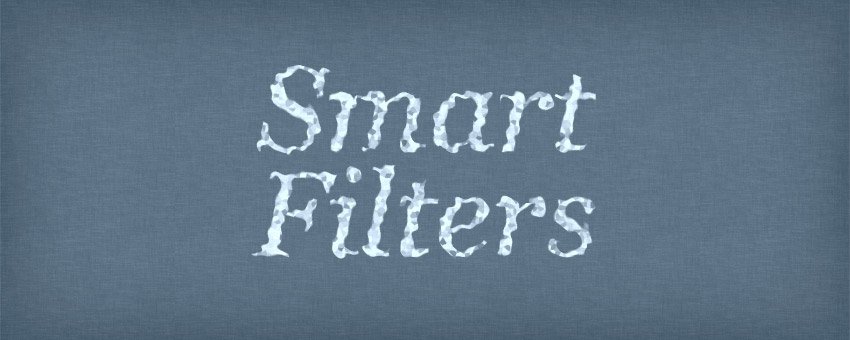How to Apply Filters to a Text Layer Without Rasterizing it First in Photoshop

Watch Video Tutorial
Download full HD videos and tutorial project files with a PanoPass. You'll also get instant access to everything on the site, including products, and more.
Before Smart Objects, the only way to apply Photoshop filters to text layers was to rasterize them first. It's now possible to apply filters without rasterizing layers by first converting them to Smart Objects.
This tutorial will teach you how to apply filters to text layers without having to rasterize them first. When filters are applied to Smart Objects, they become Smart Filters and provide added benefits that you'll also learn about.
Step 1
Create a new document at 1920 x 1280. We've inserted a subtle background, but you can use a solid color if you'd like.
Using the Type tool, create some large text and place it in the center of your document.

Step 2
With your text layer selected, if you click Filter > Noise > Add Noise, Photoshop will prompt you to rasterize your text. This is exactly what we don't want, so hit cancel.
Right click your text layer in the Layers panel and select Convert to Smart Object.
Now click Filter > Noise > Add Noise and use the following settings.
You'll see in the Layers panel that the noise effect is being applied as a Smart Filter, which means you can double click it at any time and adjust each setting.

Step 3
Click Filter > Distort > Ripple and use the following settings.
Now you'll notice that your effects are stacked as individual Smart Filters in the Layers panel.
Not only can you go back and edit the settings for each filter, but you can drag and drop them to update the order in which they are applied.

Step 4
Click Filter > Blur > Motion Blur and use the following settings just to apply one last effect.

Step 5
Double click your text layer in the Layers panel and it will open in a new window. Update your text using the Type tool. If necessary, use the crop tool to expand or shrink your canvas so your letters don't get cut off.
Hit CTRL + S to save your Smart Object, and return to your working document. You'll see that the text has been updated, and all the filters we applied earlier are still applied.

This is a very basic example of how you can apply filters without rasterizing text. You can create Smart Object within Smart Objects and add/remove filters to create some much better looking effects.
Have you used this method in a project before? Did you know this was possible? Let us know in the comments.
